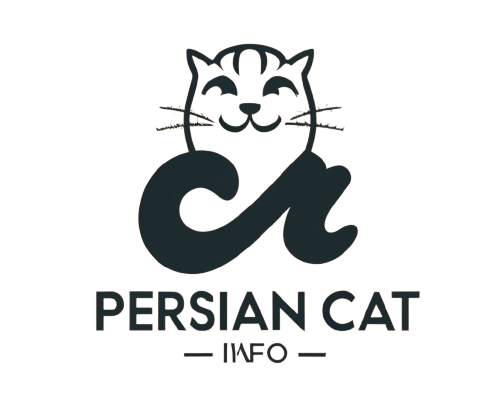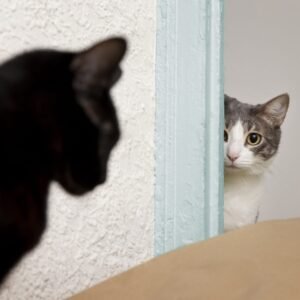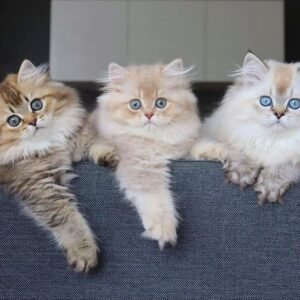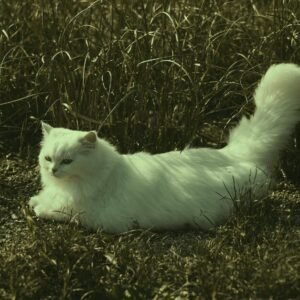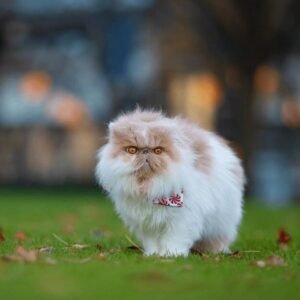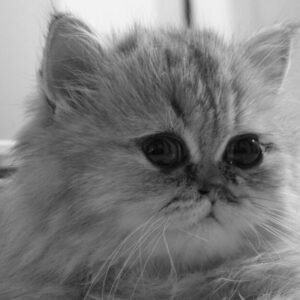A tortoiseshell Persian cat is one of the most popular breeds worldwide. They are recognized by their beautiful coat pattern. An amazing and interesting fact about it is that a Tortoiseshell Persian cat is neither a breed nor a cross.
These cats are named due to their multicolored coat that resembles the tortoiseshell known as a “tortie “
History of the tortie Persian cat
Persian cats are the most popular breed in the world. The Persian cat has been around since the 1500s when Europeans first imported cats from Persia.
Descriptions of cats resembling modern Persians can be found in hieroglyphics as far back as 1684 B.C. They were highly valued in different cultures, and often considered symbols of luck, prosperity, and protection from evil spirits. However, the proper breed was bred by the English, crossing Middle Eastern cats with each other.
The breed still gained popularity throughout Great Britain for its luxurious appearance. Genetic research indicates that modern Persian cats are related to the cat breeds of Western Europe, not the Near East like their predecessors.
In the US, Torties have gotten the nickname “money cats,” as they are believed to bring wealth and financial prosperity.
They can be a variety of colors, but they are most commonly black and orange.
How Tortie Persian cat has gained popularity
Persian cats are the most popular breeds of all time. Tortie Persian cat is a popular and beautiful breed due to their long beautiful color coat as it is also a variation of the Persian cat breeds. It’s not hard to see why; these cats look like a walking piece of art!
These cats became popular in the UK before expanding to North America. In 2008, the Persian was the most popular breed in the US. It now lags behind the British Shorthair, Ragdoll, Siamese, Maine Coon, and Burmese in the UK.
Formal recognition of the Tortie Persian cat
The Persian cat was one of the foundation breeds of the Cat Fanciers Association (CFA) and was recognized in 1906. The tortie Long-haired cats are the most beautiful cats in the world. Therefore, it is said that Long-haired cats like Persian cats are so popular in Europe.
You know that it is the most amazing fact that the Persian cats participated in the modern cat show held in England in 1871(we don’t know that the tortie Persia cats participated in them).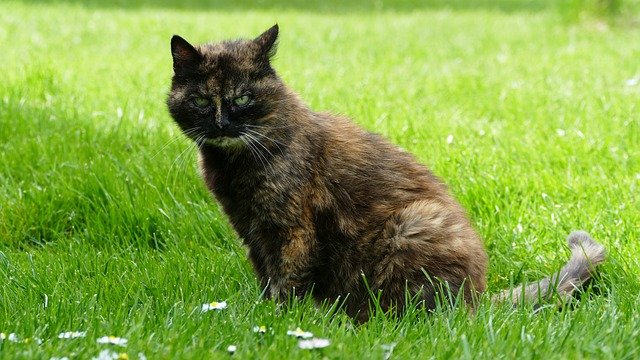
In America, the Persian breed received formal recognition as soon as there was an organization to provide it. From this, the Persian cat has gained so much popularity.
Official breed standard recognizes Tortoiseshell Persians as an acceptable color variation, so we can assume the first of these flashy felines was likely registered in the early 1900s.
Top eight interesting facts about Tortie Persian cat
1. Totie Persian cat is not a breed
A Tortie cat breed does not exist. Although tortoiseshell coats are most commonly a combination of ginger and black, they can also have hints of cream, orange, or gold.
The colors in their coats are either “bridled”—which looks like they’re woven together—or “patched”—which means the colors form in large patches all over the body.
2. Many Tortie Persian cats are female
Almost all tortoiseshell cats are females. This is because females have two X chromosomes, and it’s this chromosome that carries the genetic information for black or orange coat color.
3. Male Tortie Persian cats are rare
It is considered that almost all the Tortie Persian cats are female, as they need two X chromosomes. Male tortie Persian cats are incredible. One estimate puts that male Tortie Persian cats are 1 in 3000 cats.
One sad thing about the male tortie Persian cats is that they are saddled with several health diseases and developmental faculties.
4. Tortie Persian cats are lucky
You know that the tortie Persian cats remained a sign of wealth and good luck for centuries. Their popularity has crossed the oceans throughout the USA, England, and the world.
In Ireland, Tortoiseshell cats bring luck to owners, and in the US, these cats may be referred to as “money cats.” In Japan, they’re believed to bring good luck against shipwrecks. Other cultures interpret the Tortoiseshell cat as a sign of bad luck, however, such as England.
5. Any Cat Breed Can Be a Tortie Persian
As tortie Persian cats are extremely gorgeous, it’s not an exclusive Persian trait. Any cat breed from the Maine coon to the Siamese can be a Tortie Persian.
6.“Torbie” Persian Cats Are Also a Thing
Torbie Persians are a delightful variation within the Persian cat breed. The term “torbie” is a combination of “tortoiseshell” and “tabby,” reflecting their coat pattern, which includes elements of both. These cats often have a mix of tortoiseshell colors (typically orange and black) along with tabby stripes. With their unique and beautiful fur, they’re a charming addition to the Persian cat family.
7.“Tortitude” Is a Thing
“Tortitude” refers to the unique personality traits often associated with tortoiseshell cats. These felines are believed to have a distinct attitude characterized by a combination of independence, confidence, and sometimes a touch of sassiness.
While every cat is an individual with its own personality, many people who have owned or interacted with tortoiseshell cats notice these common traits.
8 . They were known by a different name until the 1960s
The official breed name for Persians in the United States was “Longhairs” until the 1960s. They are still known as Longhairs or Persian Longhairs across the pond in the United Kingdom.
Does a Tortoiseshell Persian Cat Make a Good Pet?
Tortie Persian cats have all the qualities that a Persian cat needs to have a loving nature. The Tortie Persian cats are so sweet and loving. They also become lap cats as they show affection.
Tortie Persian cat can become a good pet. They are quiet and placed, and they are well suited to the mellow environments. Persian owners also consider that these cats are so much friendly and loving than any of the other cat breeds.
The long, thick, and gorgeous Tortoiseshell coat also requires regular grooming. Tangles and mats are common, so make sure you brush your Tortie Persian every other day.
Tortie Persian cat. Advantages and Disadvantages
Advantages
- Playful Energy
- striking appearance
- Adaptability
- Low Matting Tendency
- affectionate nature
- Loyal companionship
- gental temperament
Disadvantages
- Seasonal Shedding
- Temperament Variations
- Potential Behavioral Issues
- Sensitive Stomachs
- Care Expenses
- Health concerns
- possible malocclusion
The average life span of the Tortie Persian cat
Tortie Persians, like most Persians, typically have an average lifespan of around 12 to 17 years. With good care, a healthy diet, regular veterinary check-ups, and a suitable living environment, they can live even longer, sometimes reaching their late teens or early twenties.
Size of the Tortie Persian cat
Tortie Persians, like other Persian cats, are medium to large-sized cats. They have a stocky build with a broad chest, sturdy legs, and a round face with a short nose. Adult Tortie Persians typically weigh between 7 and 12 pounds (3 to 5.5 kilograms), but individual sizes can vary.
Conclusion
At last, I can say that Tortie Persian cat is a beautiful, kind breed of Persia cat. Though Tortoiseshell patterns can appear on many cat breeds, the striking markings look particularly attractive on Persians because of their long and luxurious coats. They need regular grooming, and their health and behavior can vary. With care, they become devoted companions, bringing joy and charm to their families.
